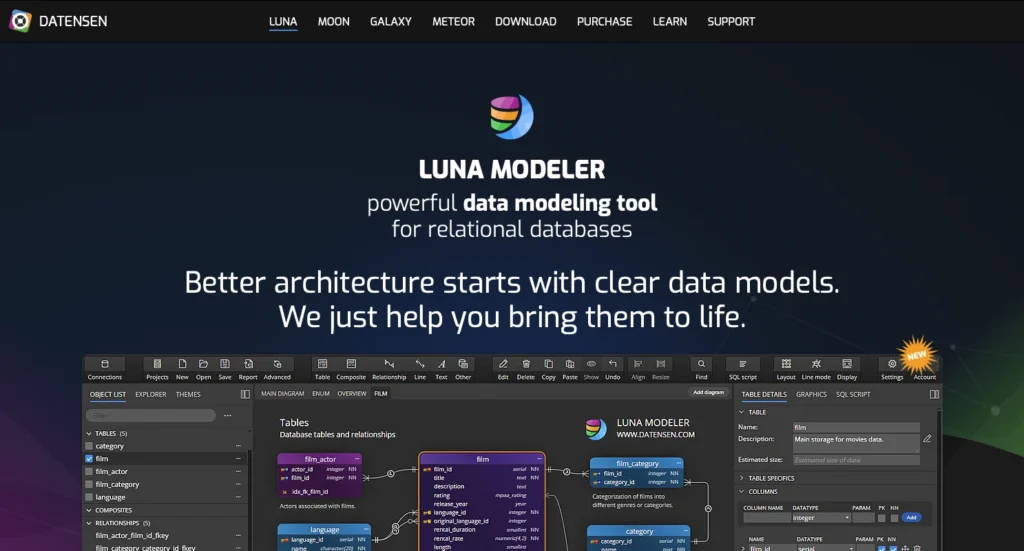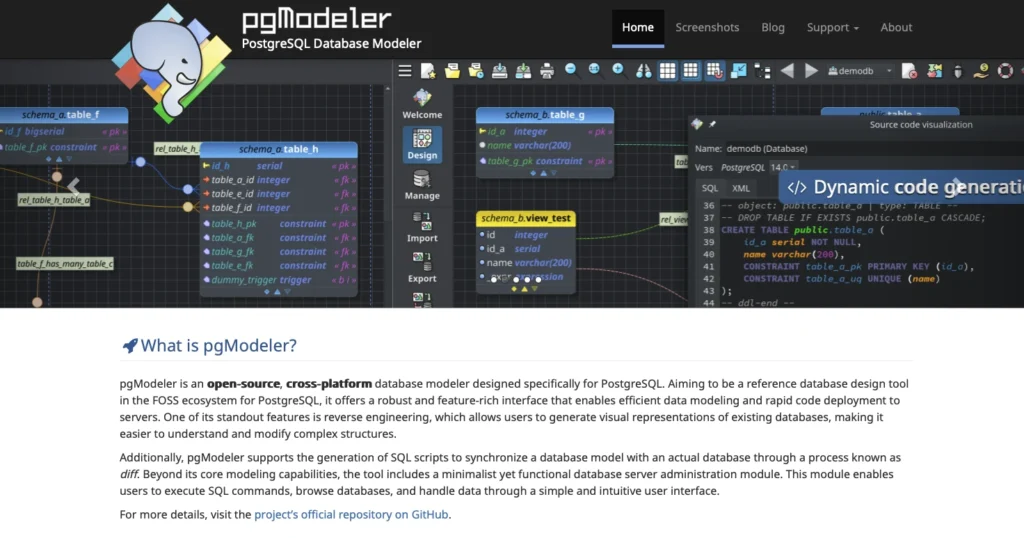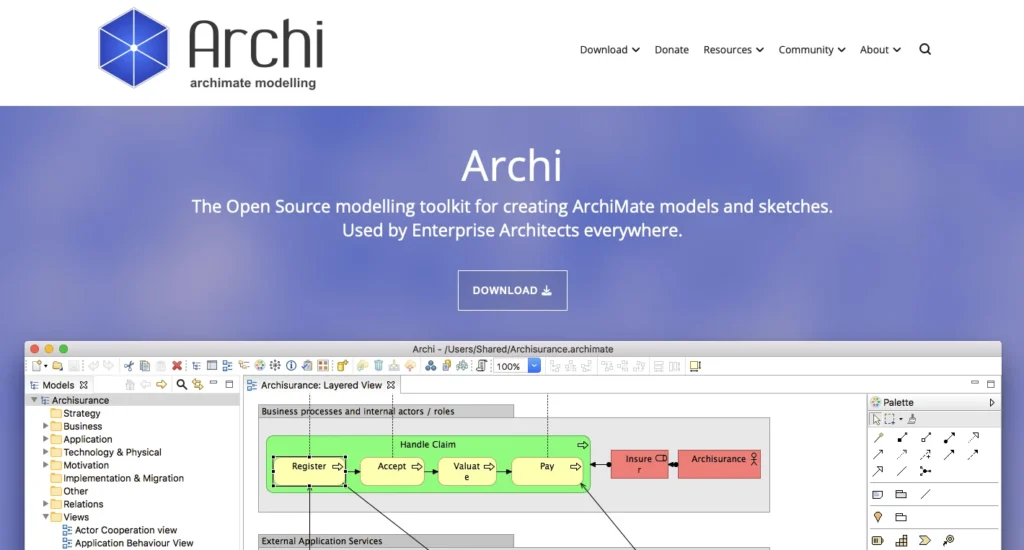If you’ve ever built a database without a clear plan, you know how fast things can spiral. Tables get messy. Relationships break. Queries slow down. That’s why data modeling matters – and why the right tool can save you hours of rework.
In this guide, you’ll discover the 7 best data modeling tools in 2025, learn the basics of data modeling, and find out how to choose the right platform for your needs.

The 7 Best Data Modeling Tools in 2025
Let’s explore the top tools available today. Each one brings unique strengths to the table.
1. erwin® Data Modeler
erwin Data Modeler is a heavyweight in the data modeling space. Built for enterprise environments, it supports conceptual, logical, and physical modeling with precision. You get robust metadata management, version control, and integration with governance platforms.
It’s ideal for teams that need strict compliance, detailed documentation, and scalable design. Once you get past the learning curve, it becomes an indispensable part of your data strategy.
Best for: Large organizations, regulated industries, and enterprise-scale data teams.
Website: https://www.erwin.com
2. ER/Studio®
ER/Studio offers powerful modeling capabilities across platforms. It’s designed to help architects and analysts stay aligned, even in complex environments. The depth of features makes it a strong choice for enterprise use.
Best for: Data architects, enterprise teams, and organizations with multi-platform data systems.
Website: https://www.erstudio.com
3. Luna Modeler
Luna Modeler is a lightweight yet capable tool designed for developers. It supports many popular database systems, incl. Oracle Database, PostgreSQL, MySQL and others. You can reverse-engineer databases, design schemas visually, and export clean SQL scripts – all from a sleek, intuitive interface.

Best for: Developers, small teams, and anyone who values simplicity and speed.
Website: https://www.datensen.com
4. MySQL® Workbench
MySQL Workbench is a go-to tool for anyone working in the MySQL ecosystem. It’s free, reliable, and tightly integrated with MySQL. It’s especially useful for startups and solo developers who need a solid tool without the overhead.
Best for: MySQL developers and teams focused on MySQL-based projects.
Website: https://www.mysql.com/products/workbench/
5. pgModeler
pgModeler is a tool built specifically for PostgreSQL. The interface is straightforward, and the tool respects the nuances of PostgreSQL. If you’re committed to the platform, pgModeler gives you everything you need to build clean, efficient databases.

Best for: PostgreSQL users and developers
Website: https://www.pgmodeler.io
6. Lucidchart
Lucidchart isn’t a dedicated data modeling tool, but it’s incredibly useful for visualizing systems and collaborating with non-technical stakeholders. It’s cloud-based and makes it easy to share diagrams across teams.
Best for: Business analysts, product managers, and teams that need quick, shareable visuals.
Website: https://www.lucidchart.com
7. Archi
Archi is focused on enterprise architecture rather than database design. It supports the ArchiMate modeling language and helps you visualize systems, processes, and strategies at a high level.
While it’s not built for relational schema modeling, it’s incredibly useful for planning and aligning technical systems with business goals.

Best for: Enterprise architects, strategic planners, and teams working on system-wide design.
Website: https://www.archi.com
Why Use a Data Modeling Tool Instead of Manual Diagrams?
I’ve sketched schemas on whiteboards. I’ve used generic diagramming tools. But once you’ve worked with a proper data modeling platform, the difference is clear.
These tools do more than draw boxes and lines. They:
- Generate SQL scripts automatically
- Reverse-engineer existing databases
- Validate relationships and constraints
- Support collaboration across teams
- Maintain documentation for audits and onboarding
- Help enforce data governance and compliance
In short, they save time, reduce errors, and make your data design future-proof.
How to Choose the Right Data Modeling Tool
Choosing the right tool depends on your role, your workflow, and your goals. Tips:
- Startups, small teams: Luna Modeler, MySQL Workbench, pgModeler
- Enterprise data teams: erwin, ER/Studio
- Strategic planners and architects: Archi, Lucidcharts
Consider your database platform, the complexity of your models, and how your team collaborates. Then pick the tool that fits – not just the one with the longest feature list.
Final Thoughts
Data modeling isn’t just about drawing diagrams – it’s about building systems that work. It helps teams speak the same language. It prevents problems before they happen. And it lays the groundwork for scalable, reliable data infrastructure.
Start simple if you’re new. Scale up as your needs grow. And always model before you build.
What Is Data Modeling, Really?
At its core, data modeling is about structure. It’s how we define, organize, and relate data before it hits the database. There are three main types:
- Conceptual models show the big picture. They define entities and relationships. Perfect for business teams.
- Logical models add detail. Attributes, keys, and rules come into play. Architects use them to plan structure.
- Physical models get technical. They map everything to a specific database – tables, indexes, constraints. That’s where developers and DBAs take over.
Each data model serves a purpose. Together, they guide the entire data lifecycle.